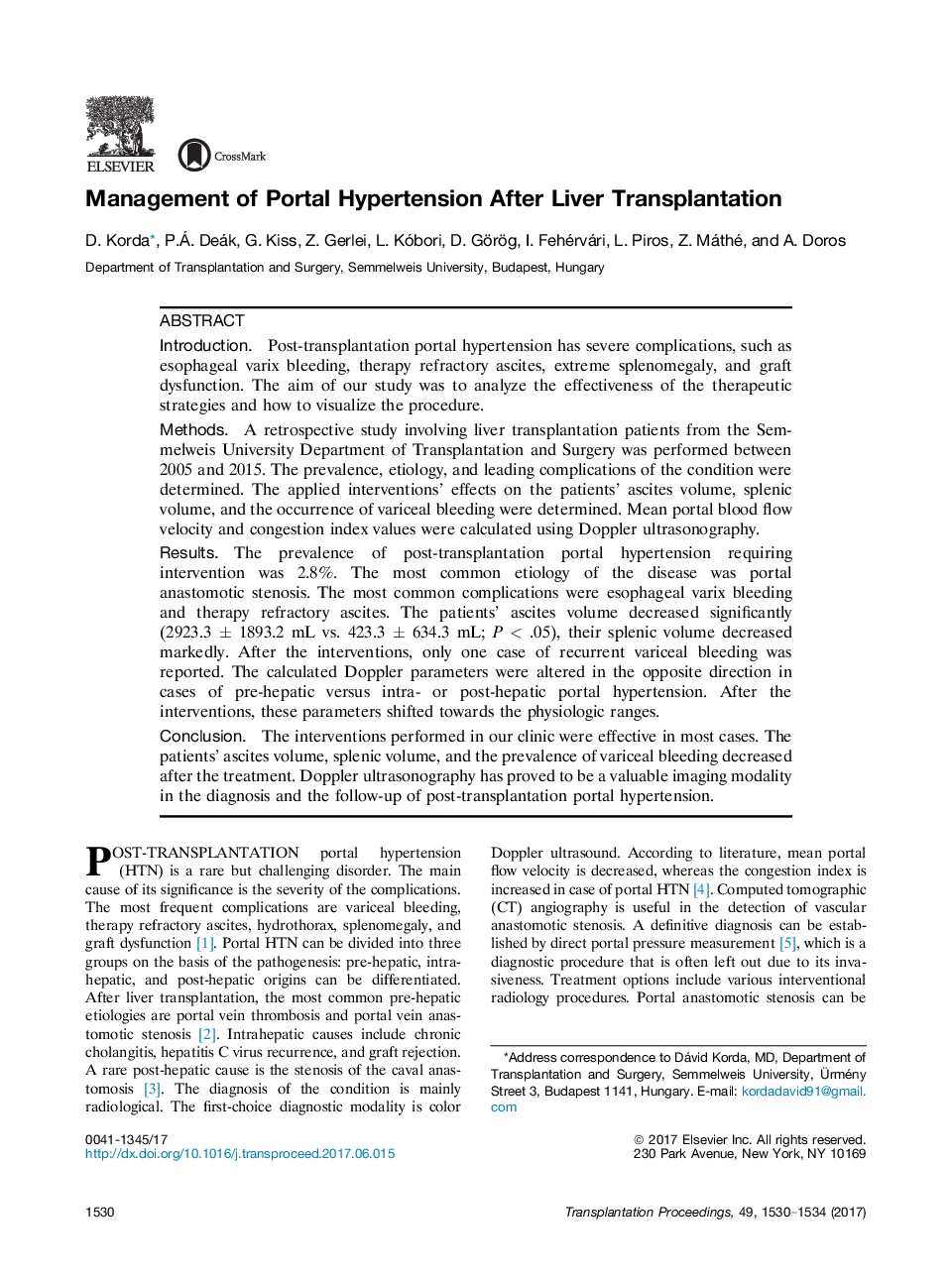| کد مقاله | کد نشریه | سال انتشار | مقاله انگلیسی | نسخه تمام متن |
|---|---|---|---|---|
| 5728728 | 1411670 | 2017 | 5 صفحه PDF | دانلود رایگان |
IntroductionPost-transplantation portal hypertension has severe complications, such as esophageal varix bleeding, therapy refractory ascites, extreme splenomegaly, and graft dysfunction. The aim of our study was to analyze the effectiveness of the therapeutic strategies and how to visualize the procedure.MethodsA retrospective study involving liver transplantation patients from the Semmelweis University Department of Transplantation and Surgery was performed between 2005 and 2015. The prevalence, etiology, and leading complications of the condition were determined. The applied interventions' effects on the patients' ascites volume, splenic volume, and the occurrence of variceal bleeding were determined. Mean portal blood flow velocity and congestion index values were calculated using Doppler ultrasonography.ResultsThe prevalence of post-transplantation portal hypertension requiring intervention was 2.8%. The most common etiology of the disease was portal anastomotic stenosis. The most common complications were esophageal varix bleeding and therapy refractory ascites. The patients' ascites volume decreased significantly (2923.3 ± 1893.2 mL vs. 423.3 ± 634.3 mL; P < .05), their splenic volume decreased markedly. After the interventions, only one case of recurrent variceal bleeding was reported. The calculated Doppler parameters were altered in the opposite direction in cases of pre-hepatic versus intra- or post-hepatic portal hypertension. After the interventions, these parameters shifted towards the physiologic ranges.ConclusionThe interventions performed in our clinic were effective in most cases. The patients' ascites volume, splenic volume, and the prevalence of variceal bleeding decreased after the treatment. Doppler ultrasonography has proved to be a valuable imaging modality in the diagnosis and the follow-up of post-transplantation portal hypertension.
Journal: Transplantation Proceedings - Volume 49, Issue 7, September 2017, Pages 1530-1534
